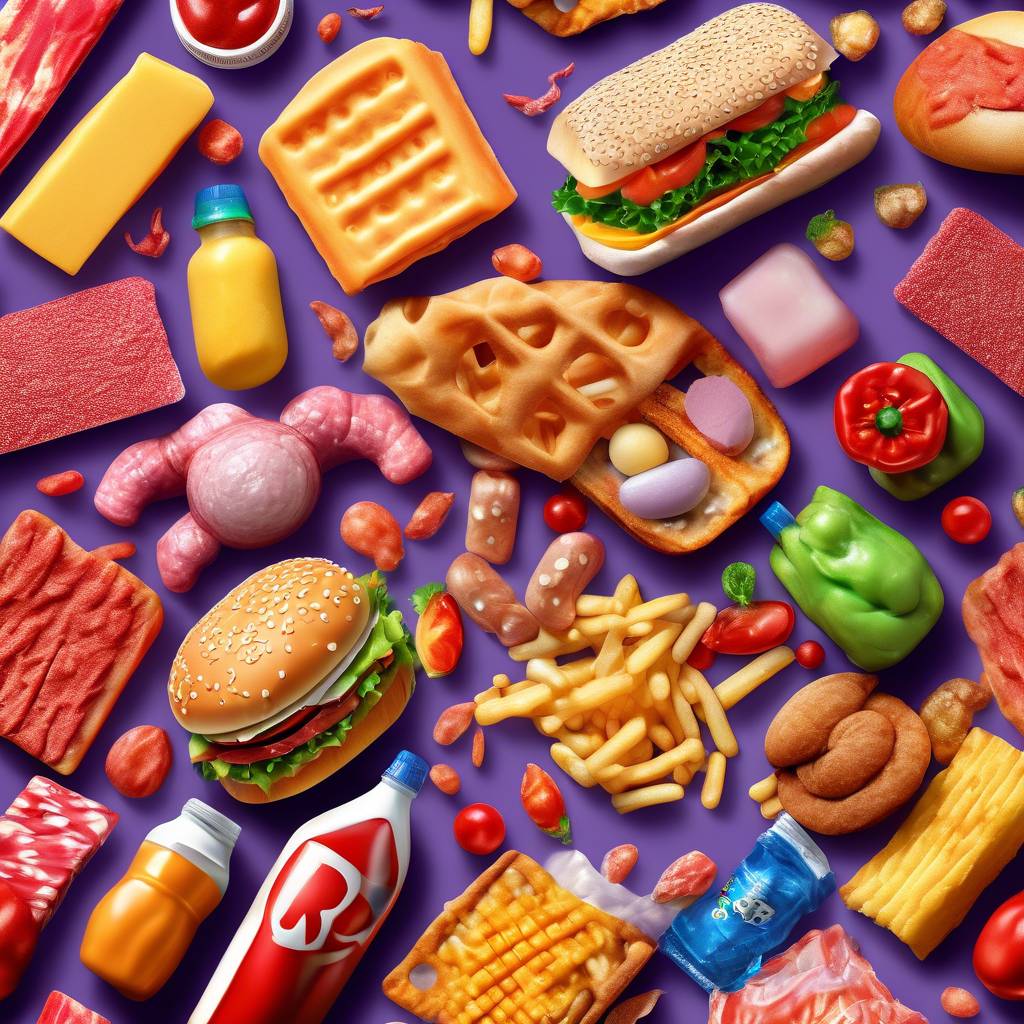A recent study published in The BMJ on May 8, 2024, followed over 100,000 individuals for more than 30 years, who had never experienced cancer, heart disease, or diabetes. The study aimed to track the effects of ultraprocessed foods on their health and found that consuming these foods led to a slightly higher risk of death. However, certain types of ultraprocessed foods were identified to have a stronger link to adverse health outcomes. Ultraprocessed foods are easily available in grocery stores, and it is important to understand how they impact overall health.
Ultraprocessed foods undergo extensive transformation from their original state and contain little to no whole food content. These foods are typically industrial formulations that include oils, fats, sugars, starch, protein isolates, flavorings, colorings, emulsifiers, and other additives. Examples of ultraprocessed foods include meat products like ham and hot dogs, soda, commercial bread, candy, and more. In comparison, processed foods have undergone some processing, such as adding salt or sugar, while whole foods have minimal processing and retain most of their nutrient density.
Consuming ultraprocessed foods regularly has been associated with various negative health outcomes, including poor mental health and an increased risk of cancer and fatal conditions. Studies have found a link between high consumption of ultraprocessed foods and symptoms of depression, anxiety, colorectal cancer, cardiovascular disease, obesity, and early mortality. It is crucial to limit the intake of ultraprocessed foods and focus on a diet rich in whole, nutrient-dense foods to promote overall well-being and longevity.
Recent research suggests that the more ultraprocessed foods consumed, the higher the health risks. It is advisable to aim for a diet that is 85% nutrient-dense whole foods and allocate the remaining 15% for other food choices. Avoiding ultraprocessed foods entirely may not be feasible for everyone due to various constraints, so it is important to assess the level of processing and nutritional value of food choices. Understanding the processing levels and nutritional content of foods can help individuals make informed decisions about their diet and overall health.
To reduce consumption of ultraprocessed foods, individuals can look for foods with minimal processing and a higher nutrient content. Some cereals and whole grains may be considered ultraprocessed but can still offer essential nutrients. Avoiding foods with a long list of unfamiliar ingredients, lack of fiber, high levels of calories, fat, sugar, and salt can help in making healthier choices. It is also essential to be cautious of the processing level, source, and brand of food products to minimize intake of ultraprocessed foods and promote a balanced diet.
While there are countless examples of ultraprocessed foods available in grocery stores, some common ones include processed reconstituted meat products, potato chips, candy, soft drinks, refined grain pretzels, commercial bread, and sweetened breakfast cereals, among others. Not all ultraprocessed foods have equal impacts on health, as highlighted in the BMJ study, which identified certain types, such as ready-to-eat meat, poultry, seafood products, artificially or sugar-sweetened beverages, ultraprocessed breakfast foods, and dairy-based desserts, as being associated with higher risks of death. Further research is needed to fully understand the specific harmful effects of different ultraprocessed foods and their mechanisms on health outcomes.









